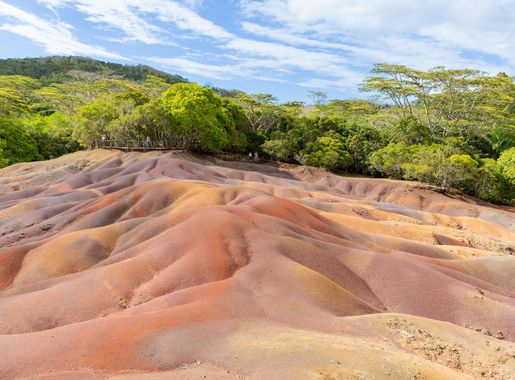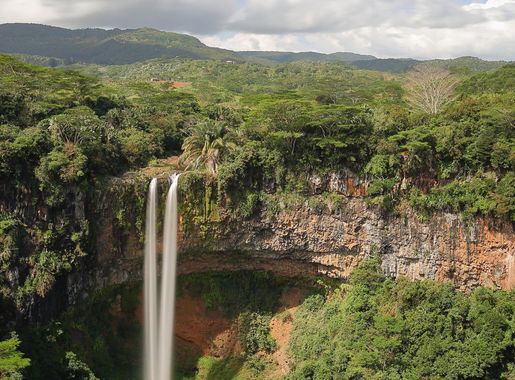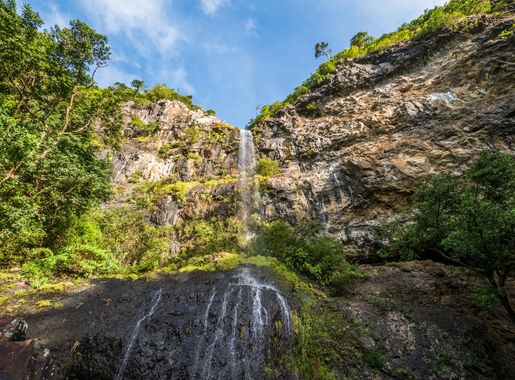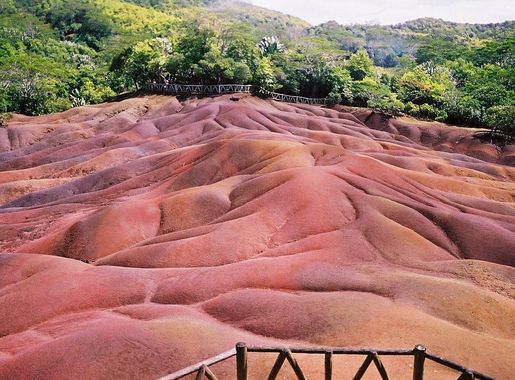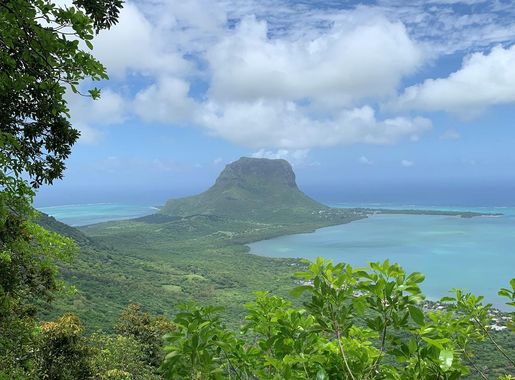
The Enigmatic Seven Coloured Earths
Discover the vibrant hues and geological wonders of the Seven Coloured Earths in Mauritius, a unique natural phenomenon that enchants visitors with its stunning beauty.
Nestled in the heart of Chamarel on the island of Mauritius, the Seven Coloured Earths is a mesmerizing geological formation that captivates visitors with its vibrant hues of red, brown, violet, blue, green, purple, and yellow. This natural wonder, spanning approximately 7,500 square meters, is believed to have formed millions of years ago due to the transformation of basaltic lava into clay minerals. The unique coloration of the earth is a result of the cooling of molten volcanic rocks at different temperatures, creating a stunning rainbow effect that is visible even on cloudy days. The Seven Coloured Earths is surrounded by lush tropical vegetation, offering a stark contrast to the vivid sands and making it a perfect spot for photography and leisurely walks. To enhance your visit, the site features well-maintained wooden pathways and viewing platforms that provide unobstructed views of the dunes. Additionally, the area is home to a small park where giant tortoises can be observed, adding to the charm of this incredible destination. Whether you are a nature enthusiast, a photographer, or simply seeking a unique travel experience, the Seven Coloured Earths promises an unforgettable journey into one of Mauritius' most iconic landscapes.
Local tips in Seven Coloured Earths
- Visit early in the morning or late in the afternoon to avoid crowds and capture the best light for photography.
- Bring a hat and sunscreen as there is limited shade at the viewing platforms.
- Combine your visit with a trip to the nearby Chamarel Waterfall for a full day of exploration.
- Look out for the giant tortoises in the on-site park, a delightful experience for kids and adults alike.
- Wear comfortable walking shoes as the paths can be uneven in some areas.
The Enigmatic Seven Coloured Earths
Nestled in the heart of Chamarel on the island of Mauritius, the Seven Coloured Earths is a mesmerizing geological formation that captivates visitors with its vibrant hues of red, brown, violet, blue, green, purple, and yellow. This natural wonder, spanning approximately 7,500 square meters, is believed to have formed millions of years ago due to the transformation of basaltic lava into clay minerals. The unique coloration of the earth is a result of the cooling of molten volcanic rocks at different temperatures, creating a stunning rainbow effect that is visible even on cloudy days. The Seven Coloured Earths is surrounded by lush tropical vegetation, offering a stark contrast to the vivid sands and making it a perfect spot for photography and leisurely walks. To enhance your visit, the site features well-maintained wooden pathways and viewing platforms that provide unobstructed views of the dunes. Additionally, the area is home to a small park where giant tortoises can be observed, adding to the charm of this incredible destination. Whether you are a nature enthusiast, a photographer, or simply seeking a unique travel experience, the Seven Coloured Earths promises an unforgettable journey into one of Mauritius' most iconic landscapes.
When is the best time to go to Seven Coloured Earths?
Iconic landmarks you can’t miss
Chamarel Seven Colored Earth Geopark
Explore the vibrant natural beauty of the Chamarel Seven Colored Earth Geopark, a stunning geological wonder in Mauritius showcasing seven distinct colors.
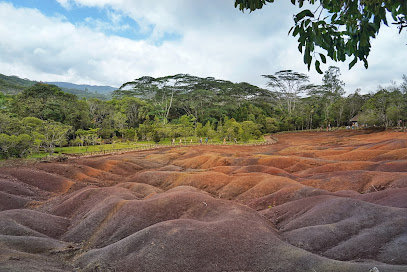
Chamarel Waterfall
Experience the breathtaking beauty of Chamarel Waterfall, a natural wonder in Mauritius with stunning views and serene surroundings.
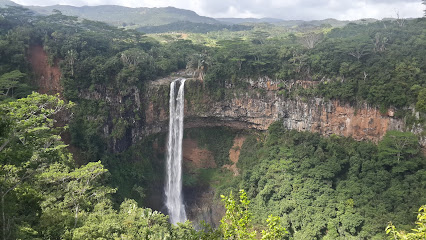
Curious Chamarel
Explore the stunning landscapes and unique geological wonders of Curious Chamarel, a must-visit tourist attraction in Mauritius.
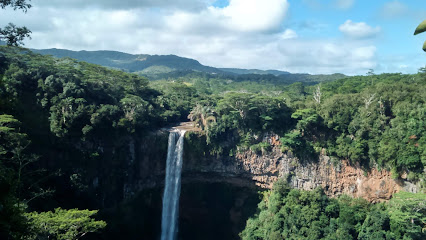
Ebony Forest Reserve Chamarel
Discover the breathtaking beauty and ecological diversity of Ebony Forest Reserve Chamarel, a must-visit natural preserve in Mauritius.
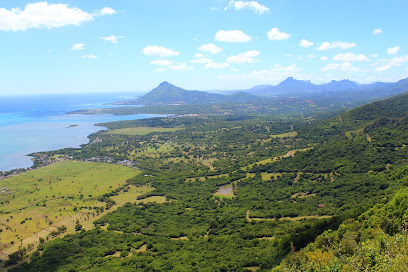
Seven Colored Earth Ground Zero
Experience the mesmerizing beauty of the Seven Colored Earth in Mauritius, a natural landmark showcasing vibrant dunes and rich geological history.
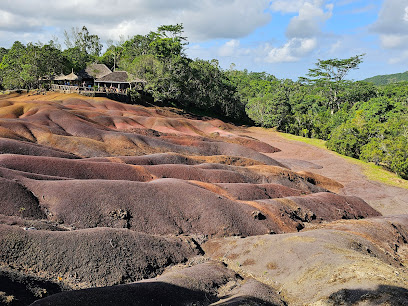
Unmissable attractions to see
Dolswim Ltd
Experience the thrill of whale watching and boat tours at Dolswim Ltd in Grand Riviere Noire, Mauritius, where marine adventures await.
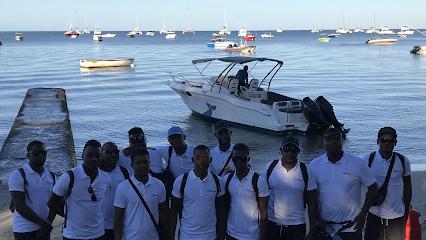
JPH Charters (Point of embarkation)
Experience the thrill of fishing in Black River, Mauritius with JPH Charters, where adventure meets stunning natural beauty.
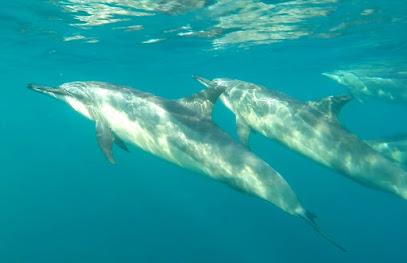
Jay7Cascades
Explore the breathtaking beauty of Jay7Cascades with its stunning waterfalls and lush hiking trails in the heart of Vacoas-Phoenix, Mauritius.

Mare Aux Joncs, Black River Gorges, Mauritius Waterfall
Experience the breathtaking beauty of Mare Aux Joncs Waterfall, a hidden gem in Mauritius' Black River Gorges, perfect for hiking and nature lovers.
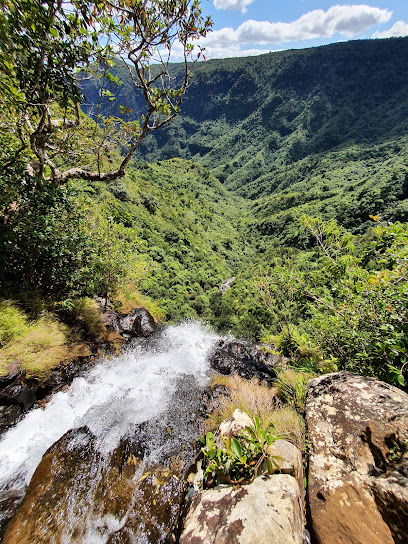
Snorkeling Le Morne
Discover the vibrant underwater world at Snorkeling Le Morne, a snorkeling paradise in Mauritius with stunning coral reefs and diverse marine life.
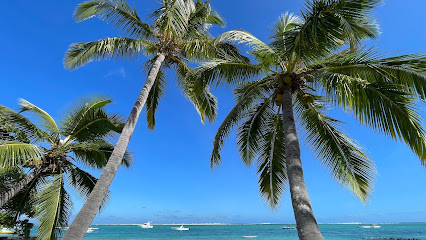
Ilot Fourneau
Discover Ilot Fourneau, a tropical paradise in Mauritius with stunning beaches, vibrant marine life, and breathtaking views perfect for relaxation and adventure.

ADD Mangrove Eco-Forest
Discover the enchanting ADD Mangrove Eco-Forest in Le Morne, a serene escape into Mauritius' lush nature and vibrant biodiversity.
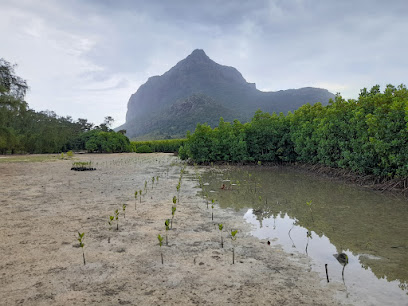
Coline Mamzel Zabeth
Discover the serene beauty and rich culture of Coline Mamzel Zabeth, a must-visit tourist attraction in Cascavelle, Mauritius.

Isola Della Cozza
Discover the serene beauty of Isola Della Cozza, a stunning island in Mauritius known for its pristine beaches and vibrant marine life.
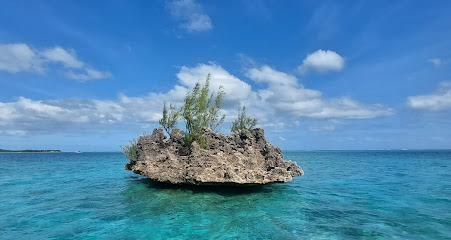
Peace Pole
Discover the serene beauty and universal message of hope at the iconic Peace Pole in Baie du Cap, a must-visit for every traveler.
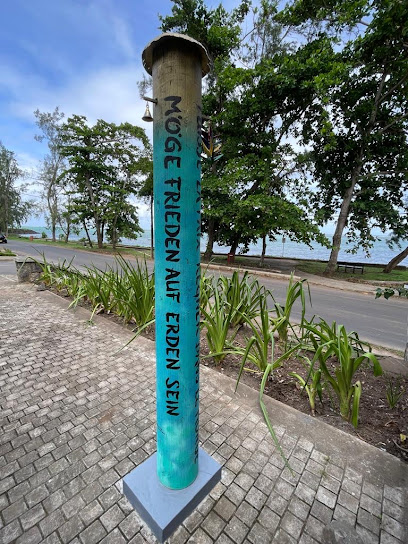
Taxi in le morne
Experience the heart of Mauritius with a unique taxi ride in Le Morne, connecting you to vibrant culture and breathtaking landscapes.
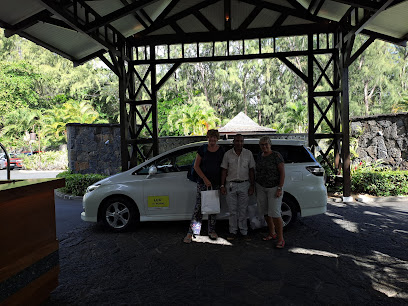
Dadrio stone point
Experience the breathtaking views and serene beauty of Dadrio Stone Point, a hidden gem in Mauritius perfect for nature lovers and photographers.

Case noyale lodge
Explore the serene beauty of Case Noyale Lodge, a tranquil retreat nestled in lush landscapes, perfect for relaxation and adventure in Mauritius.

Sea Explorer Ltd
Experience the beauty of the ocean at Sea Explorer Ltd in Vacoas-Phoenix, Mauritius, where adventure meets education in an unforgettable marine journey.

Essential places to dine
Rhumerie de Chamarel Restaurant & Rum Distillery
Discover authentic Mauritian flavors and artisanal rums at Rhumerie de Chamarel, nestled amidst breathtaking landscapes.
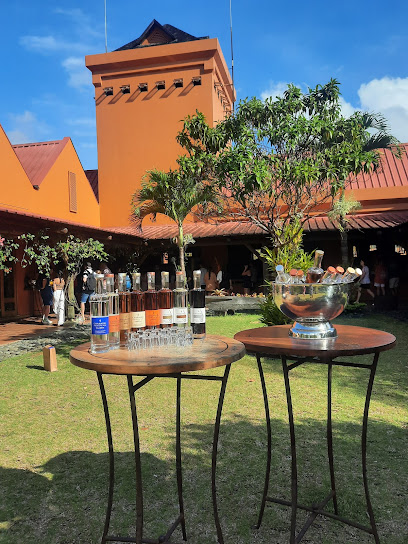
Le Bois Cheri Restaurant
Experience exquisite Mauritian cuisine amidst breathtaking views at Le Bois Cheri Restaurant.
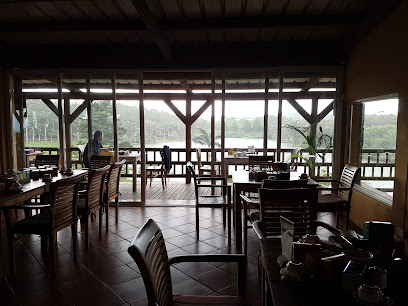
Le Chamarel Restaurant
Experience exquisite Mauritian cuisine amidst breathtaking views at Le Chamarel Restaurant – a culinary gem in the heart of Chamarel.
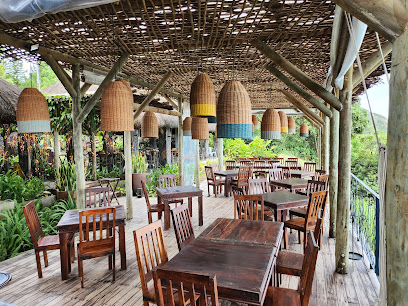
Wapalapam Island Eatery
Discover Wapalapam Island Eatery: where delectable flavors meet stunning views in Le Morne Brabant.
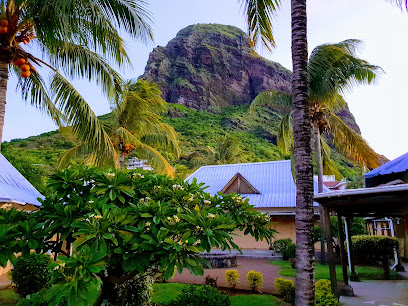
Palais de Barbizon
Experience authentic Mauritian cuisine at Palais de Barbizon while enjoying breathtaking views in Chamarel.
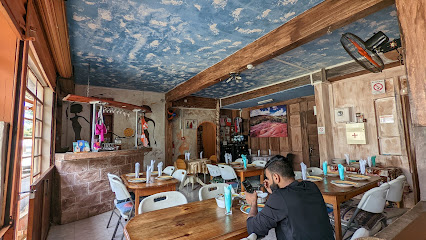
Varangue Sur Morne
Discover culinary excellence at Varangue Sur Morne – where exquisite flavors meet breathtaking views in Mauritius.

Chez Ruben Restaurant
Discover authentic Mauritian flavors at Chez Ruben Restaurant in scenic Chamarel - where every dish tells a story.
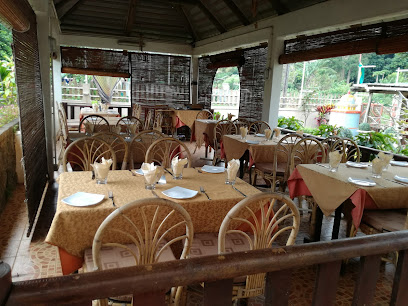
Le Château de Bel Ombre
Experience culinary excellence amidst breathtaking views at Le Château de Bel Ombre - where fine dining meets Mauritian charm.
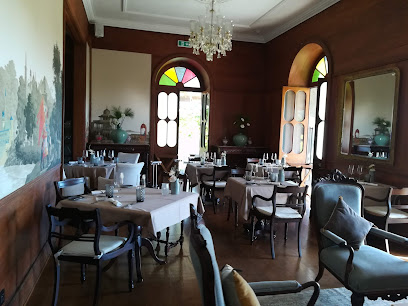
Restaurant Les Palmiers Chez Dev
Discover authentic Mauritian cuisine at Restaurant Les Palmiers Chez Dev in Chamarel – a perfect blend of flavor and natural beauty.
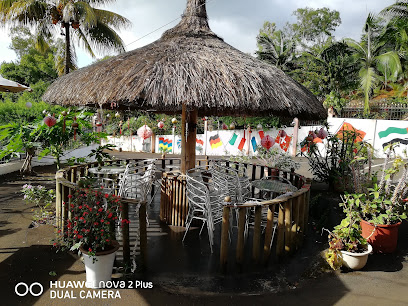
Mich Resto
Experience authentic Mauritian cuisine at Mich Resto in Chamarel, where local flavors meet stunning views for an unforgettable dining adventure.
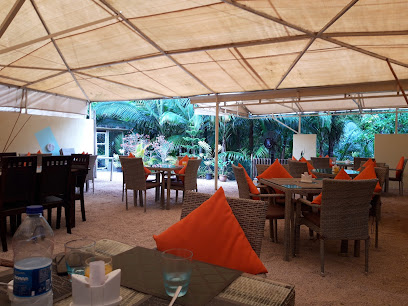
Restaurant Station A
Experience exquisite local cuisine with stunning coastal views at Restaurant Station A in Baie du Cap.

Chez Pierre Paul
Experience authentic Mauritian flavors at Chez Pierre Paul in Chamarel - where every dish tells a story amidst breathtaking scenery.
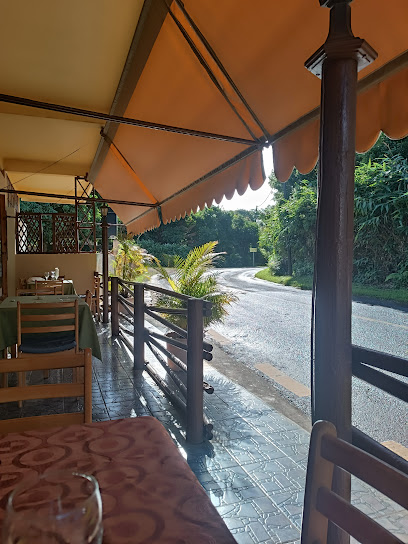
La Citronelle
Experience authentic Mauritian cuisine at La Citronelle in Chamarel, where stunning views meet vibrant flavors.
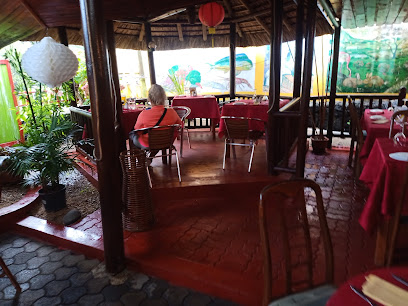
One Love Snack
Experience authentic Mauritian cuisine at One Love Snack in Chamarel - where flavor meets hospitality amidst stunning landscapes.
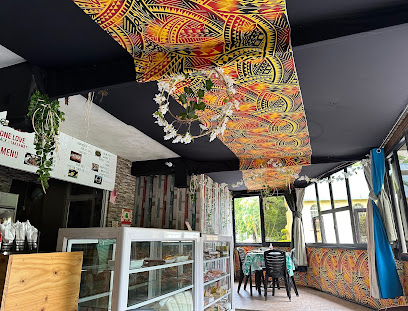
Rum Shed Bar & Grill Restaurant at Shanti Maurice Resort & Spa
Experience the vibrant flavors of Mauritius at Rum Shed Bar & Grill in Shanti Maurice Resort & Spa - where culinary delight meets breathtaking coastal views.
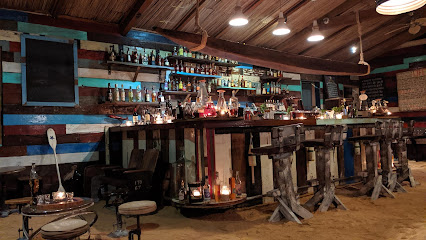
Markets, malls and hidden boutiques
Chamarel Seven Colored Earth Geopark
Discover the breathtaking colors of Chamarel Seven Colored Earth Geopark, a unique natural wonder in Mauritius showcasing vibrant geological formations.

GSR La Gaulette Supermarket
Explore GSR La Gaulette Supermarket in Black River for a unique shopping experience filled with local flavors and friendly service.
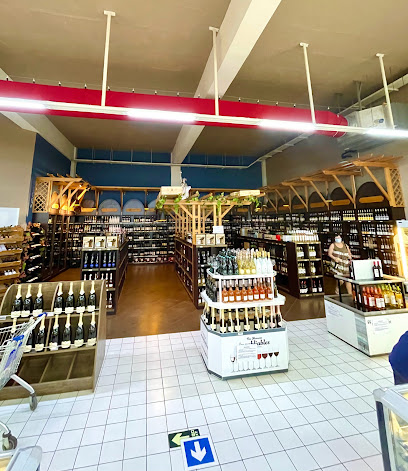
Seven Colored Earth Ground Zero
Explore the vibrant hues of the Seven Colored Earth Ground Zero in Mauritius, where nature and history come together in a breathtaking display.
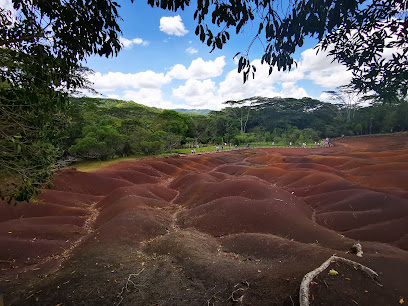
Le Reef Shop
Discover the ultimate surfing experience at Le Reef Shop in La Gaulette, offering top-quality gear and expert local advice for all surfers.
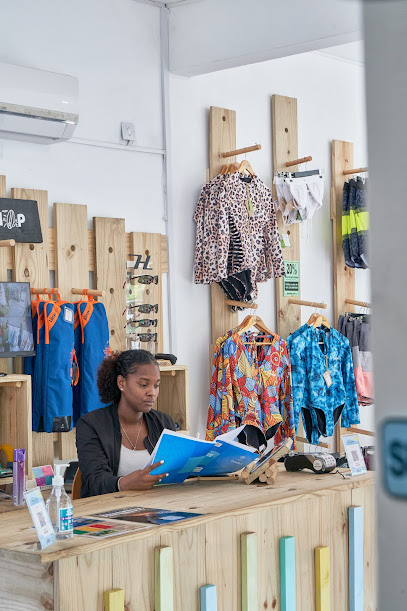
La gaulette Kite Repair
Explore La Gaulette Kite Repair for expert kite repairs and a friendly atmosphere, making your kite adventures in Mauritius unforgettable.
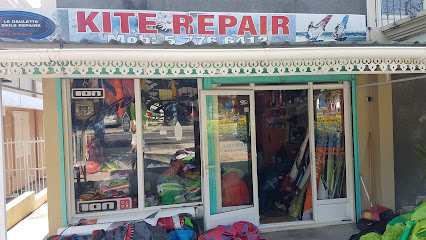
Down South Surf Shop
Explore Down South Surf Shop in La Gaulette for the finest surf gear and expert advice to elevate your surfing experience in Mauritius.
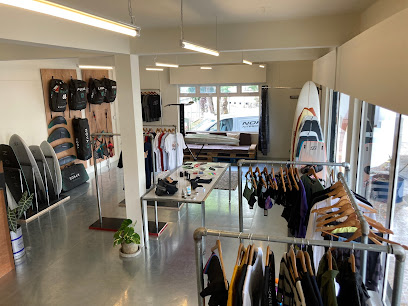
Tou Korek Surf Shop
Discover the ultimate surf shop experience in La Gaulette, Mauritius—your one-stop destination for surfing gear and beach apparel.
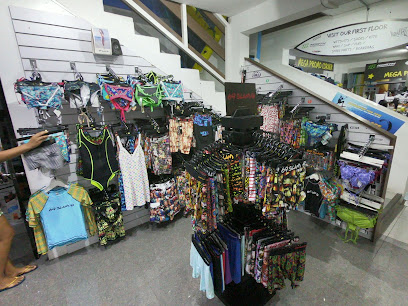
Pryde Shop
Discover the ultimate sporting goods store in La Gaulette, offering top-notch surf apparel and equipment for every water sports enthusiast.

Village Walk Shopping Centre
Discover the vibrant shopping and dining experiences at Village Walk Shopping Centre in Black River, Mauritius, perfect for tourists seeking local flavor and souvenirs.
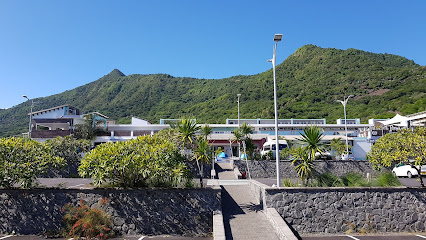
Mel's Crafts Mauritius
Explore Mel's Crafts Mauritius for unique gifts, custom t-shirts, and handmade souvenirs that embody the spirit of the island.

Quincaillerie Future Line Ltd
Discover the essential hardware supplies at Quincaillerie Future Line Ltd in La Gaulette, Mauritius, for all your DIY and home improvement projects.
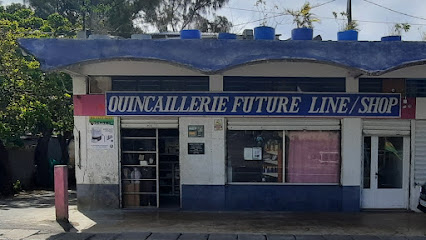
Chez Robert
Experience the vibrant flavors of Mauritius at Chez Robert, your local grocery store in La Gaulette offering fresh produce and local snacks.
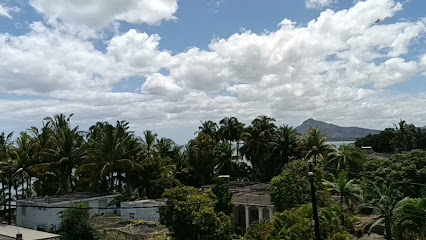
A.S GUNNOO TRADING LTD (HARDWARE)
Explore A.S GUNNOO TRADING LTD in La Gaulette for all your hardware needs, offering a wide range of tools and materials at competitive prices.
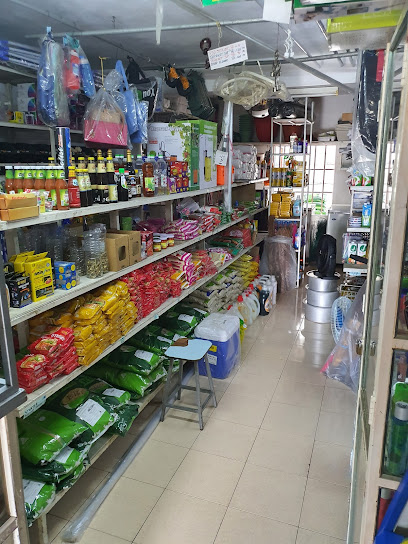
Craft world Market
Explore unique clothing and artisan creations at Craft World Market in Coteau Raffin, a vibrant shopping destination reflecting local culture.
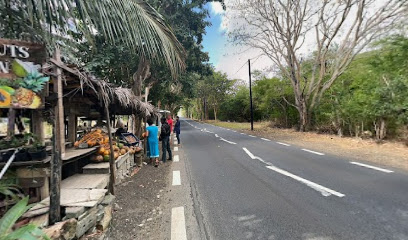
Café de shamarel
Discover the charm of Café de Shamarel, a hidden gem in Mauritius offering local delights and stunning views in the heart of Chamarel.
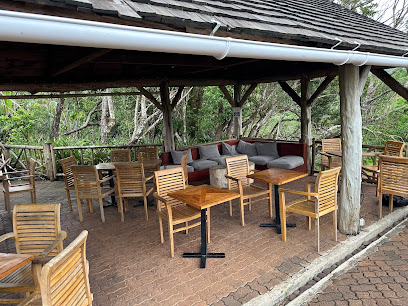
Essential bars & hidden hideouts
Rhumerie de Chamarel Restaurant & Rum Distillery
Discover the culinary and rum-making heritage of Mauritius at Rhumerie de Chamarel, where flavors and nature unite in a breathtaking setting.
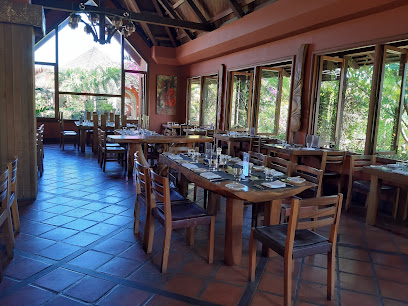
Big Willy's
Experience the vibrant dining and nightlife scene at Big Willy's, where delicious food meets exhilarating entertainment in Mauritius.
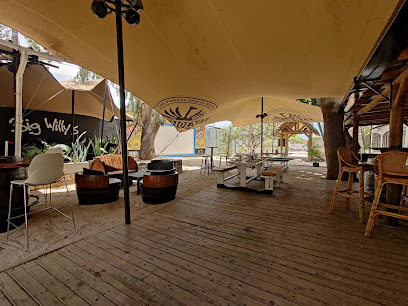
Enso Restaurant & Lounge Bar
Discover the vibrant flavors of Mauritius at Enso Restaurant & Lounge Bar in La Gaulette, where every meal is a culinary delight.
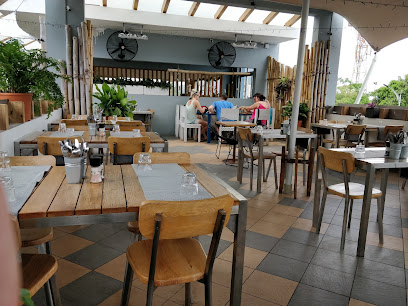
Chez Ruben Restaurant
Experience the vibrant tastes of Mauritius at Chez Ruben, a charming restaurant in Chamarel offering an authentic culinary journey.
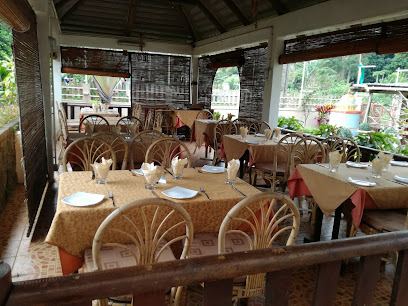
Restaurant Les Palmiers Chez Dev
Discover the authentic tastes of Mauritius at Les Palmiers Chez Dev in Chamarel, a restaurant offering local delights in a picturesque setting.
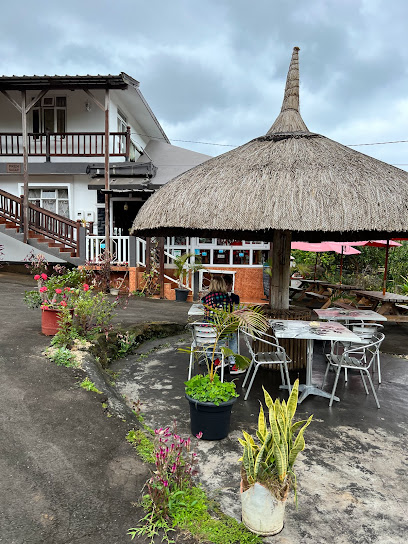
Saveur Tropical
Experience the vibrant flavors of Mauritius at Saveur Tropical, a top-rated restaurant in the scenic Chamarel region, perfect for all food lovers.

Mich Resto
Experience the authentic flavors of Mauritius with stunning views at Mich Resto in Chamarel, a must-visit restaurant for travelers.
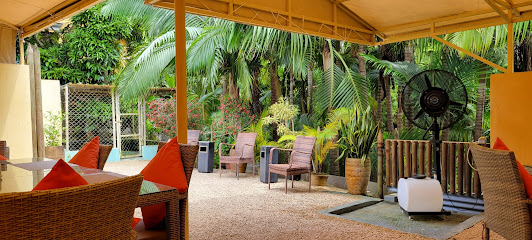
Moon Bar’k
Discover the captivating ambiance and culinary delights at Moon Bar’k, the ultimate bar and restaurant experience by the mesmerizing Baie de Grande Riviere Noire.
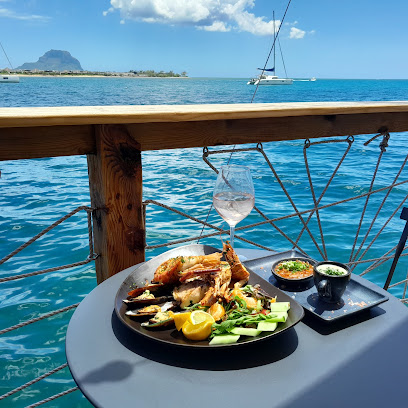
Noel Desirée Ave
Discover the vibrant flavors of Mauritian cuisine in the heart of Chamarel at Noel Desirée Ave, a culinary experience not to be missed.
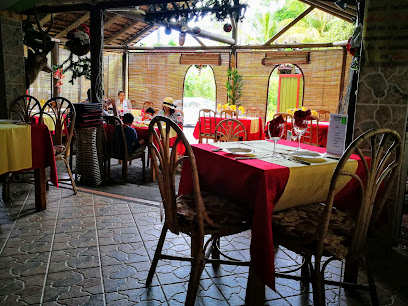
Domaine Du Cachet
Domaine Du Cachet: Experience exquisite dining amidst Chamarel's stunning landscapes, savoring local flavors in an unforgettable setting.
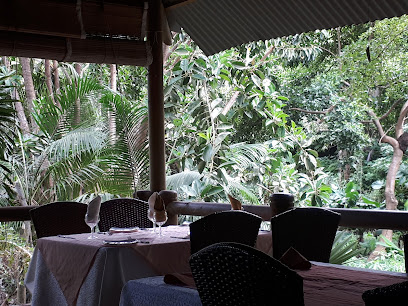
View Bar
Discover tranquility and breathtaking views at View Bar in Chamarel, where signature cocktails and stunning sunsets await every visitor.
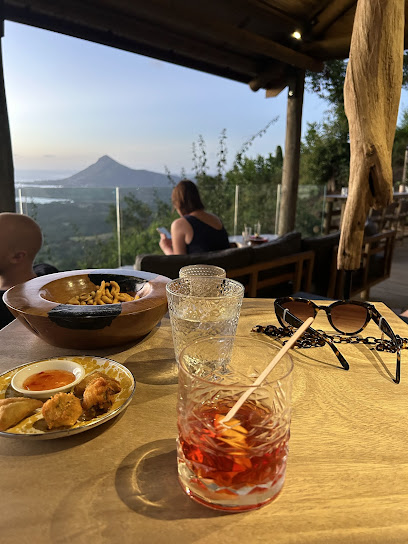
Blue bar
Discover the vibrant nightlife at Blue Bar in Bel Ombre, where exquisite cocktails and stunning views create an unforgettable experience.

Paradis Bar
Discover the tranquil charm of Paradis Bar in Le Morne, Mauritius – your ultimate beachfront escape for tantalizing drinks and stunning ocean views.
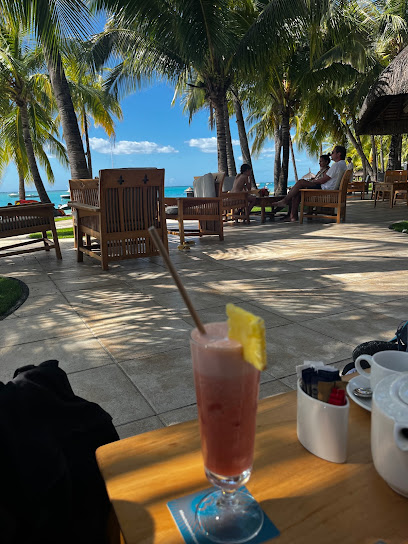
The Cavendish
Discover the vibrant nightlife at The Cavendish in Bel Ombre, where friendly vibes and delicious drinks create unforgettable memories.
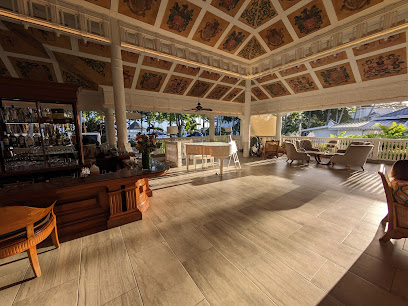
Appanna Bar
Discover the lively spirit of Chamouny at Appanna Bar, a must-visit for tourists seeking great drinks and a vibrant social atmosphere.
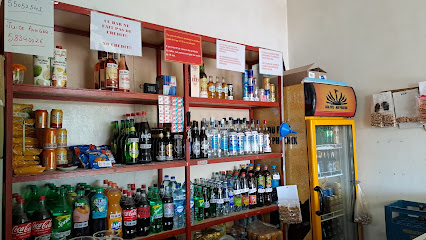
Local Phrases about Seven Coloured Earths
-
- HelloBonjour
[Bon-jour] - GoodbyeAu revoir
[O re-vwar] - YesWi
[Wee] - NoNon
[Non] - Please/You're welcomeS'il vous plaît/De rien
[Seel voo pleh/Dee ree-en] - Thank youMerci
[Mer-see] - Excuse me/SorryExcusez-moi/Désolé
[Ex-koo-zay mwa/Day-zo-lay] - How are you?Comment ça va?
[Kom-mon sa va] - Fine. And you?Bien. Et toi?
[Byen. Ay twah] - Do you speak English?Parlez-vous anglais?
[Par-lay voo ahn-glay] - I don't understandJe ne comprends pas
[Zhe nuh com-pron pah]
- HelloBonjour
-
- I'd like to see the menu, pleaseJe voudrais voir le menu, s'il vous plaît
[Zhe voo-dray vwar luh menu, seel voo pleh] - I don't eat meatJe ne mange pas de viande
[Zhe nuh monj pah de vee-and] - Cheers!Santé!
[San-tay] - I would like to pay, pleaseJe voudrais payer, s'il vous plaît
[Zhe voo-dray pay-ay, seel voo pleh]
- I'd like to see the menu, pleaseJe voudrais voir le menu, s'il vous plaît
-
- Help!Au secours!
[Oo seh-coor] - Go away!Allez-vous en!
[Al-lay voo on] - Call the Police!Appelez la police!
[Ah-peh-lay la po-leece] - Call a doctor!Appelez un médecin!
[Ah-peh-lay un med-seen] - I'm lostJe suis perdu
[Zhe swee pair-doo] - I'm illJe suis malade
[Zhe swee mah-lahd]
- Help!Au secours!
-
- I'd like to buy...Je voudrais acheter...
[Zhe voo-dray ash-tay...] - I'm just lookingJe regarde juste
[Zhe ruh-gard zhust] - How much is it?Combien ça coûte?
[Kom-byen sa koot] - That's too expensiveC'est trop cher
[Say tro cher] - Can you lower the price?Pouvez-vous baisser le prix?
[Poo-vez voo bay-say luh pree]
- I'd like to buy...Je voudrais acheter...
-
- What time is it?Quelle heure est-il?
[Kel er ay il] - It's one o'clockIl est une heure
[Il ay oon er] - Half past (10)Dix heures et demie
[Dees er ay de-mee] - MorningMatin
[Ma-tan] - AfternoonAprès-midi
[Ah-pray-mee-dee] - EveningSoir
[Swah] - YesterdayHier
[Yay] - TodayAujourd'hui
[O-zhoor-dwee] - TomorrowDemain
[De-mahn] - 1Un
[Oon] - 2Deux
[Duh] - 3Trois
[Twa] - 4Quatre
[Kat] - 5Cinq
[Sank] - 6Six
[Sees] - 7Sept
[Set] - 8Huit
[Wheat] - 9Neuf
[Nuff] - 10Dix
[Dees]
- What time is it?Quelle heure est-il?
-
- Where's a/the...?Où est un/le...?
[Oo ay oon/luh] - What's the address?Quelle est l'adresse?
[Kel ay lad-res] - Can you show me (on the map)?Pouvez-vous me montrer (sur la carte)?
[Poo-vez voo muh mon-tray (sur la cart)] - When's the next (bus)?Quand est le prochain (bus)?
[Kan ay luh pro-shan (bus)] - A ticket (to ....)Un billet (pour ....)
[Oon bee-yay (poor)]
- Where's a/the...?Où est un/le...?
History of Seven Coloured Earths
-
The Seven Coloured Earths are a natural phenomenon that emerged due to the unique volcanic activity in the Chamarel region. These sand dunes are composed of seven distinct colors: red, brown, violet, blue, green, yellow, and purple. The colors are a result of the decomposition of volcanic rocks, specifically basalt, into clay minerals over time. This process began millions of years ago during the island's volcanic formation.
-
The Seven Coloured Earths were first observed by the early settlers of Mauritius in the 18th century. French colonists, who were primarily focused on sugarcane cultivation, stumbled upon this curious sight in the dense forests of Chamarel. Initial reactions were of awe and bewilderment, as the vibrantly colored dunes contrasted starkly with the surrounding greenery.
-
The village of Chamarel, where the Seven Coloured Earths are located, holds significant cultural value for the Mauritian people. Named after Charles Antoine de Chazal de Chamarel, a French landowner, the area is rich with history. The site has been a source of inspiration for local folklore, and the natural wonder has been integrated into the cultural narratives of the island.
-
In the 20th century, scientists began to study the Seven Coloured Earths to understand the underlying geological processes. Studies revealed that the colors are due to the presence of various metal oxides: iron and aluminum compounds contribute to the reds, browns, and purples, while silica is responsible for the blue and green hues. These findings have been pivotal in understanding the island's volcanic past.
-
In the late 20th and early 21st centuries, the Seven Coloured Earths became one of Mauritius' prime tourist attractions. The site was developed to include walkways, observation decks, and informational plaques to educate visitors about its geological and cultural significance. Efforts were made to preserve the natural landscape while making it accessible to the growing number of tourists.
-
Recognizing the ecological importance of the Seven Coloured Earths, conservation efforts have been implemented to protect the site from erosion and human interference. Strict measures have been put in place to ensure that the natural wonder remains intact for future generations. These efforts include restricting access to the dunes and promoting sustainable tourism practices.
Seven Coloured Earths Essentials
-
The Seven Coloured Earths is located in the Chamarel plain of the Rivière Noire District in southwestern Mauritius. The nearest major airport is Sir Seewoosagur Ramgoolam International Airport, approximately 45 kilometers away. From the airport, you can rent a car, take a taxi, or book a guided tour to reach Chamarel. The journey typically takes around 1.5 to 2 hours by road. Public buses are also available, but they may require transfers and take longer.
-
While in Chamarel, renting a car is a convenient option for exploring the area at your own pace. Local taxis are readily available, and many hotels offer shuttle services to popular attractions. Public buses operate within the region, but schedules can be irregular. For a more immersive experience, consider hiring a bicycle or scooter to navigate the scenic routes around Chamarel.
-
The official currency in Mauritius is the Mauritian Rupee (MUR). Credit and debit cards are widely accepted in hotels, restaurants, and larger shops. However, it is advisable to carry some cash, especially for smaller establishments and local markets. ATMs are available in Chamarel and nearby towns, but it's a good idea to withdraw sufficient cash before heading to remote areas.
-
Mauritius is generally a safe destination for tourists, but it is always wise to take standard precautions. Avoid walking alone at night in unfamiliar areas and keep an eye on your belongings in crowded places. While Chamarel is a peaceful area, be cautious in Port Louis and other urban centers where petty crimes like pickpocketing can occur. Always use reputable transportation services and avoid isolated areas after dark.
-
In case of emergency, dial 999 for police assistance or 114 for medical emergencies. Chamarel has a local police station and medical facilities to handle minor health issues. For serious medical emergencies, head to the nearest hospital in Black River or contact your embassy for further assistance. It is recommended to have travel insurance that covers medical emergencies and repatriation.
-
Fashion: Do wear comfortable and modest clothing, especially when visiting religious sites. Avoid overly revealing attire. Religion: Do respect local customs and traditions. Remove your shoes and cover your head when entering temples or religious sites. Public Transport: Do be respectful and give up your seat to elderly passengers. Avoid eating or drinking on public transport. Greetings: Do greet people with a smile and a handshake. A polite 'Bonjour' or 'Namaste' is appreciated. Eating & Drinking: Do try local delicacies and accept food offerings graciously. Avoid wasting food as it is considered disrespectful.
-
To experience Chamarel and the Seven Coloured Earths like a local, visit the area early in the morning to avoid crowds and enjoy the serene atmosphere. Engage with local vendors and artisans to learn about their crafts and traditions. Don't miss the Chamarel Waterfall, the Ebony Forest, and the Rhumerie de Chamarel distillery. For a unique dining experience, try the local Creole cuisine at small, family-run restaurants.
Nearby Cities to Seven Coloured Earths
-
Things To Do in Le Morne
-
Things To Do in Bel Ombre
-
Things To Do in Tamarin
-
Things To Do in Flic en Flac
-
Things To Do in Port Louis
-
Things To Do in Mahebourg
-
Things To Do in Blue Bay
-
Things To Do in Pamplemousses
-
Things To Do in Pointe aux Piments
-
Things To Do in Trou aux Biches
-
Things To Do in Poste de Flacq
-
Things To Do in Belle Mare
-
Things To Do in Riviere du Rempart
-
Things To Do in Grand Baie
-
Things To Do in Grand Gaube

